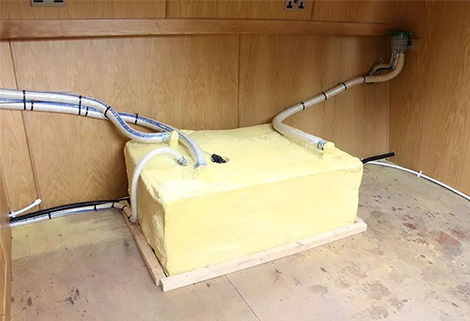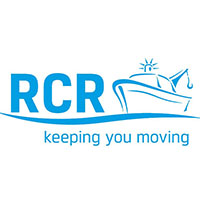domestic water tank maintenance
With more cruising downtime, this is the perfect time of year to undertake maintenance tasks. One area requiring attention is the domestic water tank, so here, River Canal Rescue advises on the different types of tanks and how to purify them.
Typically constructed of three types of material; plastic, stainless steel or mild steel, each water tank has differing maintenance requirements and associated risks.
The highest risk material is mild steel - it reacts with oxygen to produce rust which drastically depreciates the water, creating an environment for bacteria to develop. While the bacteria is not known to be dangerous, if a bacterial infection takes hold, it can give the water a foul smell and taste. When inspecting the tank, the bacterial infection will look like slime attached to the sides.
Plastic tanks offer greater protection from bacterial infection however, dependent on material and age, they will start to release toxins into the water when they begin to break down so it’s important to replace plastic tanks in accordance with their shelf life.
They’re also more likely to absorb or hold any chemicals added to purify the water. For example, the chemical in purifying tablets used to flush the system may remain in the water for a year or so and while these toxins are not dangerous, a chemical smell and taste will persist.
The lowest risk material is stainless steel – this offers protection from rusting and bacterial infection and as it doesn’t retain toxins, it avoids persistent foul smells and tastes.


Domestic water tank maintenance differs by material.
Stainless steel tanks require a purification cycle of at least once a year. To do this, add a purifying tablet to a FULL water tank and leave to activate for the advised time period. Once purification has occurred, turn all the taps on and drain the system as much as possible. This will ensure purification flows through the system. Next, refill and flush the tank twice more to evacuate any residual chemical within the system (with the taps on and a running hose pipe in the tank).
Mild steel tanks require the same purification cycle as a stainless-steel tank but they also need deep cleaning every three to five years. This entails removing the inspection cover and power washing the inside. Do not sand down or rub the rust off - rust is not dangerous and the power washer will remove any loose rust and debris build up. Do not paint the inside of the tank (unless specialist paint is used) as this will leach toxins into the water.
Plastic tanks also require a yearly purification cycle, but instead of using chemicals, they should be cleaned out manually using hot water. If the tank is inaccessible a hot water flush will suffice. If a chemical is the only method available, regularly flush the system with fresh water. Furthermore, do not allow water to stand in the tank for long periods of time as this increases the build-up of toxins in the water.
Finally, filtration is advisable for any domestic water tank. A filter will remove any debris or sediment, drastically improving the water quality and consistency, and there are also filters that can remove toxins. Filtration however, does not replace the need for tank maintenance and if this is neglected, water will be foul smelling/tasting water even if filters are installed.
RCR has more boat maintenance tips on its website.

